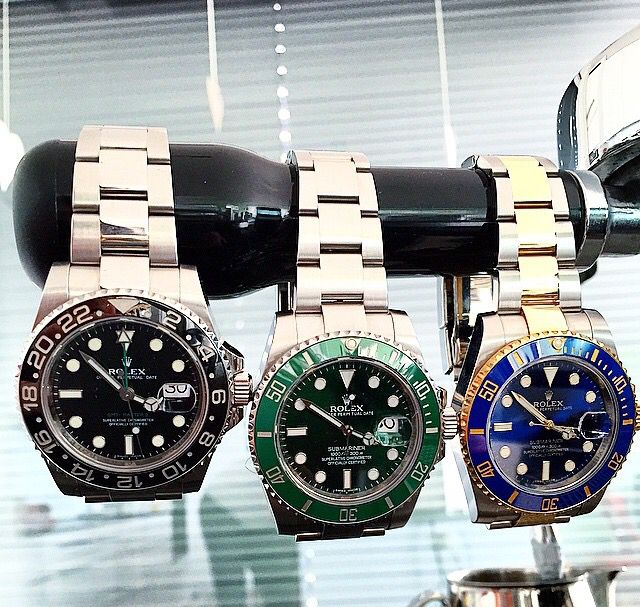The Rolex GMT-Master Vs Rolex GMT-Master II
The Rolex GMT-Master II was introduced as an improved version of the GMT-Master, which had been launched in 1954. The earlier version was designed on the request of Pan American Airlines. They wanted a special watch that could display the time in two different time zones simultaneously. Thus, the GMT-Master models feature a special 24 hour hand and a bi-directional rotating bezel that are designed to give the time in any two time zones simultaneously. GMT-Master II was launched in 1983 as an improvement over the GMT-Master.
How is the GMT-Master II an Improvement over the GMT-Master?
Although the basic functionality of the GMT-Master II is identical to the GMT-Master, the new model sports the following additional features:
* The GMT-Master II features a scratch resistant synthetic sapphire crystal. The introduction of GMT-Master II led to the synthetic sapphire crystal being fitted to all other Rolex models.
* It is equipped with the “Jump Hour” feature, which allows the regular hour hand to be set to a different time zone without requiring any adjustment of the 24-hour hand or bezel. You simply unscrew the winding crown and turn it slowly, clockwise or counterclockwise. This will jump the hour hand one hour at a time without affecting the operation of the minute or seconds hand.
* It features an independently adjustable hour hand.
* One of the most attractive features of the GMT-Master models is their bezel. In all current GMT-Master II Models, a new bezel style has been introduced. Made from an extremely hard and beautiful ceramic material, the new bezel exhibits highly corrosion-resistant and scratch-resistant properties. The numerals engraved on this bezel are filled with gold to make them more legible and to enhance their overall look and style.
* The GMT-Master II also features larger crown guards.
* The new Triplock winding crown is fitted into all currently available GMT-Master II models. Using triple separate gaskets, it screws down like a nautical hatch and makes the watch more resistant to water and other foreign particles. The best thing is that with this new Triplock mechanism, the Rolex model can withstand water pressure of over half a ton per square centimeter
* The Blue Parachrom hairspring, an innovative alloy, is an added feature found in GMT-Master II and is absent in the GMT-Master models. This has been one of the greatest innovations of Rolex in recent years. This feature has made the watch exceptionally resistant to magnetic fields and shocks, thus enhancing performance in all conditions.
* The stainless steel versions of Rolex GMT-Master II use a highly corrosion resistant stainless steel alloy, 904L. Suitable for harsh conditions, it is also elegant.
Clearly, the Rolex GMT-Master II is a definite improvement when compared to the GMT-Master. However, you may come across many people who want to buy an older GMT-Master model for their rarity and great value as vintage collectibles. If you are looking for a GMT model in terms of functionalities, the modern GMT-Master II undeniably is the better choice.
